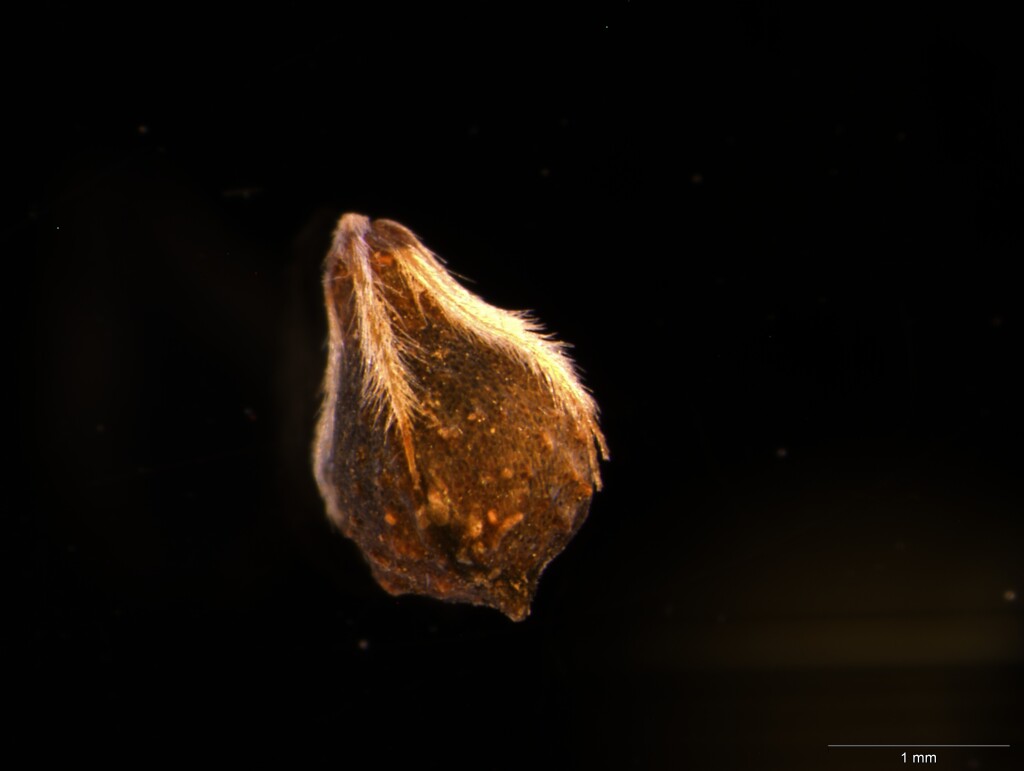Chaetospora
Erect perennials, forming dense tussocks, with short, woody, branched, pseudobulbous rhizomes. Culms not noded, slender, rigid, usually sulcate when dried, smooth. Leaves all basal and spirally arranged, with well developed blade, pseudopetiole obscure or absent; blade dorsiventral, flat to channelled above, scaberulous on the margins; ligule absent. Lowest inflorescence bract spreading to sub-erect, similar to the leaves, much longer than the inflorescence. Inflorescence condensed-compound, with several short internodes, consisting of 3–6 close fascicles of branches in the bract axils, but dense and appearing head-like; branches 1 at each node, slightly unequal, not exserted from the sheath, rigid, not flexuous. Spikelets subsessile, in clusters of 1–3, usually 1- or 3-flowered, the rachis straight, not elongated or flexuous. Glumes 5–9, acute or attenuate, spiro-distichous, puberulent or glabrous, scaberulous, ciliate or denticulate on the margins and midrib; basal 4 or more glumes sterile; upper glume with a bisexual flower. Hypogynous bristles 6, ± linear, flat to terete, margins with dense to scattered, white, short, antrorse, ciliate or ciliate-plumose hairs, persistent on the nutlet. Stamens 3; filaments glabrous; anthers twisted when dry. Style 3-fid, slender, of similar thickness throughout, mostly deciduous, a remnant often remaining on the nut. Nut obovoid, obpyriform or turbinate, with 3 whitish ribs, irregularly reticulate to rugulose or tuberculate at 40× magnification, shortly hispidulous to scabrous or tuberculate at the apex, otherwise glabrous.
Several phylogenetic studies over the last decade have demonstrated that Schoenus was non-monophyletic (e.g. Musili et al. 2016). These studies have repeatedly shown that Schoenus curvifolius (R.Br.) Poir. and two allied species are not related to Schoenus s. str., rather they are more closely allied to Tricostularia Nees ex Lehm. Barrett et al. (2020) reinstated the genus Chaetospora for these three species traditionally included in Schoenus, all endemic to southern Australia. Chaetospora is separated from Schoenus most clearly by the non-flexuous, straight rachilla with very short internodes, whereas in Schoenus the rachilla is flexuose with often elongated internodes. Chaetospora shares with Schoenus the Schoenus-type embryo. It differs from Tricostularia in having a compact, branched but appearing head-shaped (capitate to turbinate) inflorescence (narrow paniculate or paniculate in Tricostularia) and a Schoenus-type embryo (Helothrix-type embryo in Tricostularia).
 Spinning
SpinningBarrett, R.L.; Wilson, K.L.; Bruhl, J.J. (2020). Reinstatement and revision of the genus Chaetospora (Cyperaceae: Schoeneae). Telopea 23: 95–112.
Musili, P.M., Gibbs. A.K., Wilson, K.L.; Bruhl, J.J. (2016). Schoenus (Cyperaceae) is not monophyletic based on ITS nrDNA sequence data . Australian Systematic Botany 29: 265–283.


